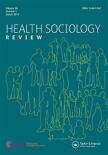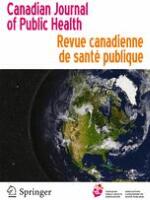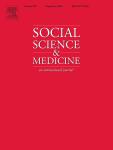Therapeutic Recreation
Related Works
Content type
Digital Document
Abstract
In the last two decades health researchers have paid increasing attention to the social determinants of health and health inequalities. Broadly, two hypotheses attempt to explain health inequalities--the materialist hypothesis and the psychosocial hypothesis. The purpose of this study was to examine the relationship between poverty and women's health from the perspectives of a group of poor women. Our qualitative study with 20 diverse women on low-income included 32 one-on-one interviews, 15 group meetings, and 30 sets of field notes. We used the analysis program Atlas.ti to sort, code, and conduct a content analysis. Overall, our findings revealed that both hypotheses were deeply connected with the dominant ideology of poverty and the concomitant social construction of 'welfare bum' and 'welfare mom'. Socioeconomic factors limited the women's access to health promoting resources and influenced their health behaviours (such as what they ate and how much they exercised). Ideologies that promulgated negative stereotypes legitimized the systemic barriers the women faced, enforced their material scarcity, and limited their entitlements to health-promoting services and resources. Our findings also indicated that the stereotype led the women to feel shamed, stressed, and depressed, and to adopt negative health behaviors as a way of coping and finding comfort.
Origin Information
Content type
Digital Document
Abstract
The rhetoric of "interdisciplinary," "multi-disciplinary" and "transdisciplinary" permeates many population health research projects, funding proposals, and strategic initiatives. Working across, with, and between disciplines is touted as a way to advance knowledge, answer more complex questions, and work more meaningfully with users of research. From our own experiences and involvement in the 2003 CIHR Institute for Public and Population Health's Summer Institute, interdisciplinary population health research (IPHR) remains ambiguously defined and poorly understood. In this commentary, we critically explore some characteristics and ongoing assumptions associated with IPHR and propose questions to ensure a more deliberate research process. It is our hope that population health researchers and the CIHR will consider these questions to help strengthen IPHR.
Origin Information
Content type
Digital Document
Abstract
Feminist action research is a promising, though under-developed, research approach for advancing women's health and social justice agendas. In this article the foundations, principles, dimensions, promises, and challenges of engaging in feminist action research are explored.
Origin Information
Content type
Digital Document
Abstract
Women's health research strives to make change. It seeks to produce knowledge that promotes action on the variety of factors that affect women's lives and their health. As part of this general movement, important strides have been made to raise awareness of the health effects of sex and gender. The resultant base of knowledge has been used to inform health research, policy, and practice. Increasingly, however, the need to pay better attention to the inequities among women that are caused by racism, colonialism, ethnocentrism, heterosexism, and able-bodism, is confronting feminist health researchers and activists. Researchers are seeking new conceptual frameworks that can transform the design of research to produce knowledge that captures how systems of discrimination or subordination overlap and "articulate" with one another. An emerging paradigm for women's health research is intersectionality. Intersectionality places an explicit focus on differences among groups and seeks to illuminate various interacting social factors that affect human lives, including social locations, health status, and quality of life. This paper will draw on recently emerging intersectionality research in the Canadian women's health context in order to explore the promises and practical challenges of the processes involved in applying an intersectionality paradigm. We begin with a brief overview of why the need for an intersectionality approach has emerged within the context of women's health research and introduce current thinking about how intersectionality can inform and transform health research more broadly. We then highlight novel Canadian research that is grappling with the challenges in addressing issues of difference and diversity. In the analysis of these examples, we focus on a largely uninvestigated aspect of intersectionality research - the challenges involved in the process of initiating and developing such projects and, in particular, the meaning and significance of social locations for researchers and participants who utilize an intersectionality approach. The examples highlighted in the paper represent important shifts in the health field, demonstrating the potential of intersectionality for examining the social context of women's lives, as well as developing methods which elucidate power, create new knowledge, and have the potential to inform appropriate action to bring about positive social change. [ABSTRACT FROM AUTHOR]
Origin Information
Content type
Digital Document
Abstract
Identifies approaches to the conceptualization of 'determinants of health,' 'leisure activities,' and 'active living.' Relationships between determinants of health (gender, age, education, race, social support, place of residence, socioeconomic factors, occupation, health behaviors, activity choices and leisure constraints) and levels and patterns of active living are reviewed. Relationships between determinants of health and active living are summarized within the context of an integrative framework: the precede-proceed model of health promotion planning and evaluation. The model's use highlights the need to link the historically individual-focused literature on physical activity/active living with the emerging recognition that sociocultural and structural determinants play a key role in influencing a wide range of activities in daily life.
Origin Information
Content type
Digital Document
Abstract
Conference presentation delivered at the Pediatric Work Physiology Conference, Paralia, Greece (2017).
The presentation describes the growth and maturation of a cohort of children from the BC Children's Hospital Oak Tree Clinic who are undergoing combined antiretroviral treatment (cART). It was noted that wtih early initiation of cART, there tends to be less of an effect on a child's pattern of growth and maturity. Children with HIV are typically shorter and less mature than their non-infected counterparts. The study, was a first to assess growth patterns, specifically age at peak height velocity and the adoelscent growth spurt, in children wtih HIV.
Origin Information






